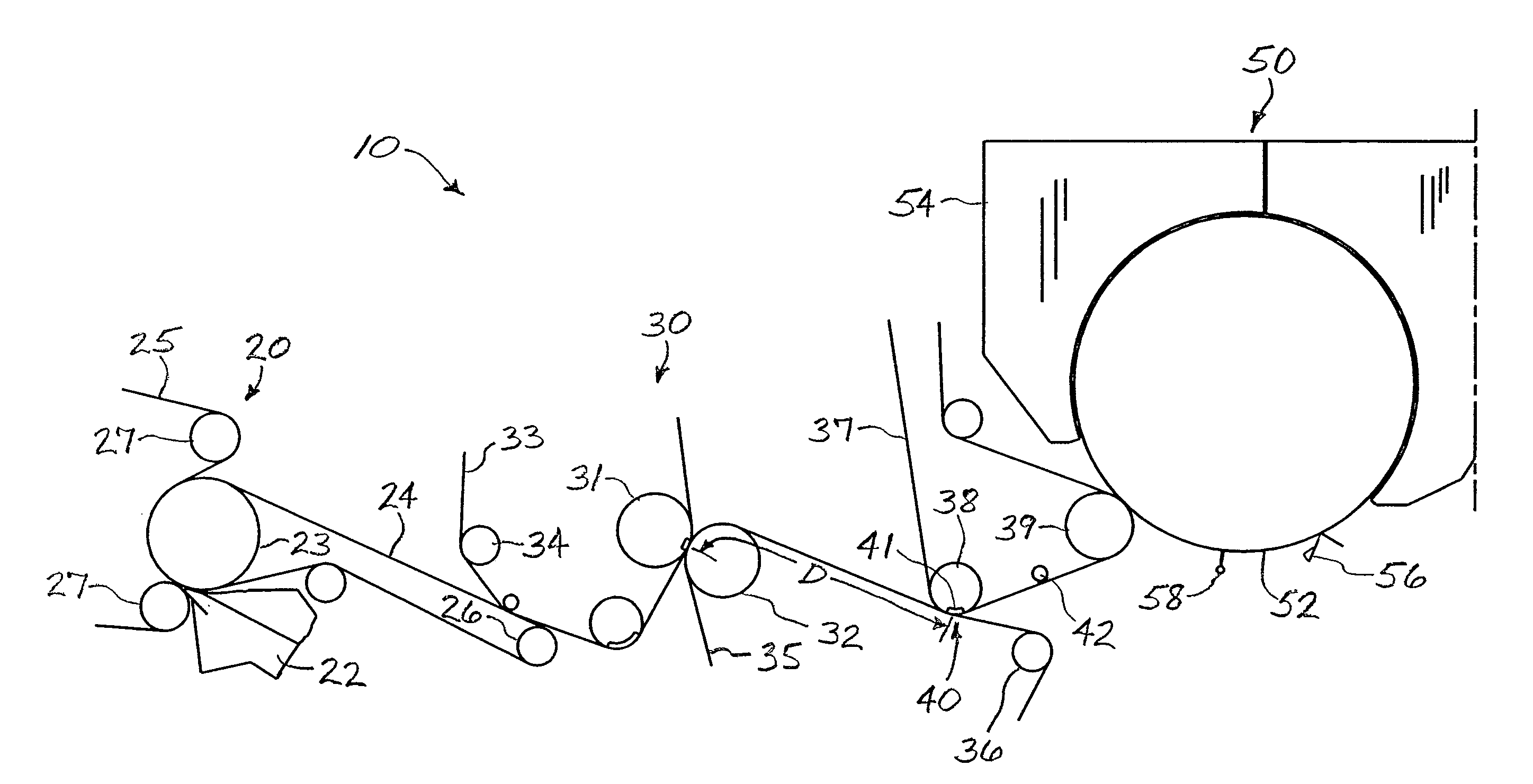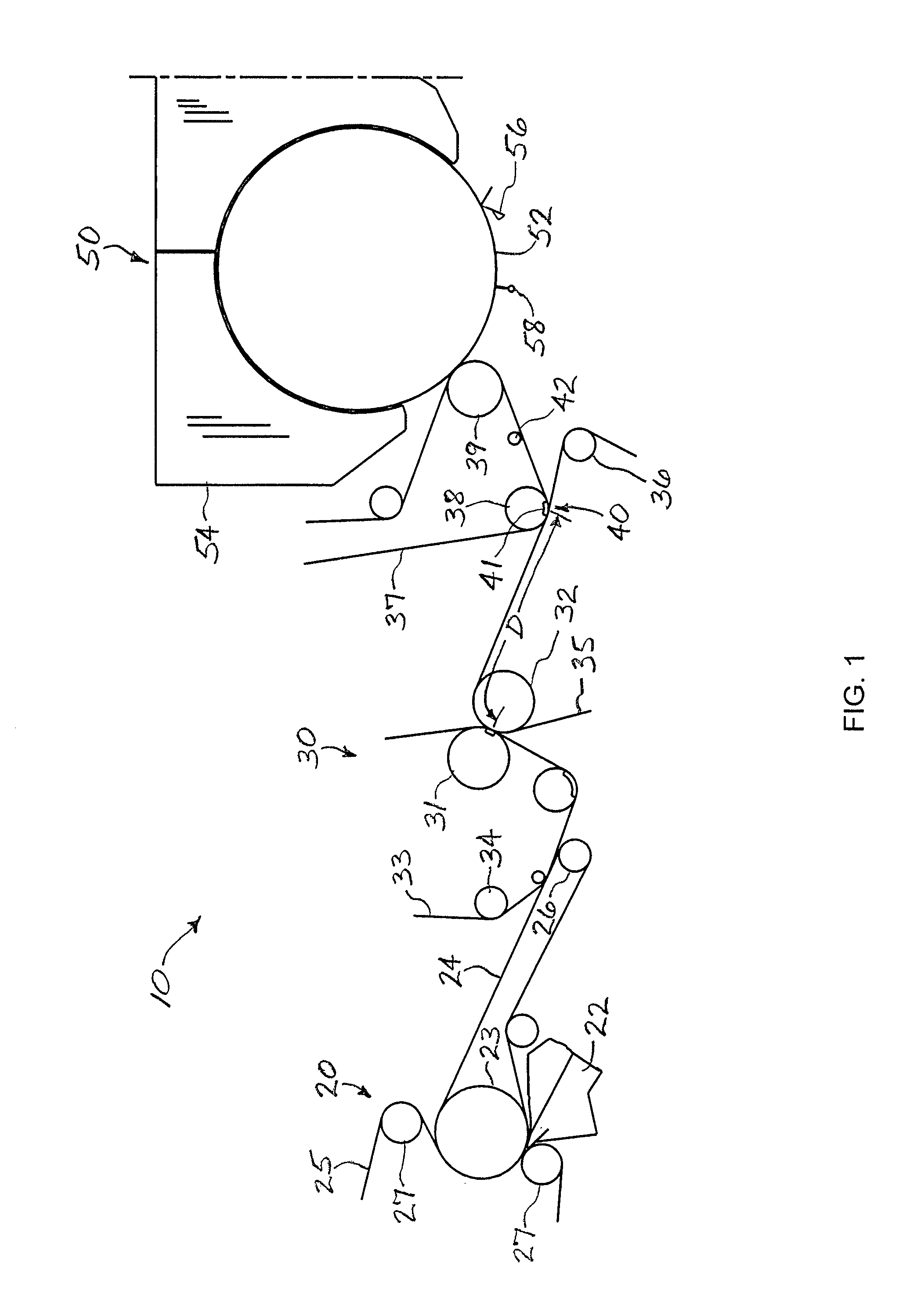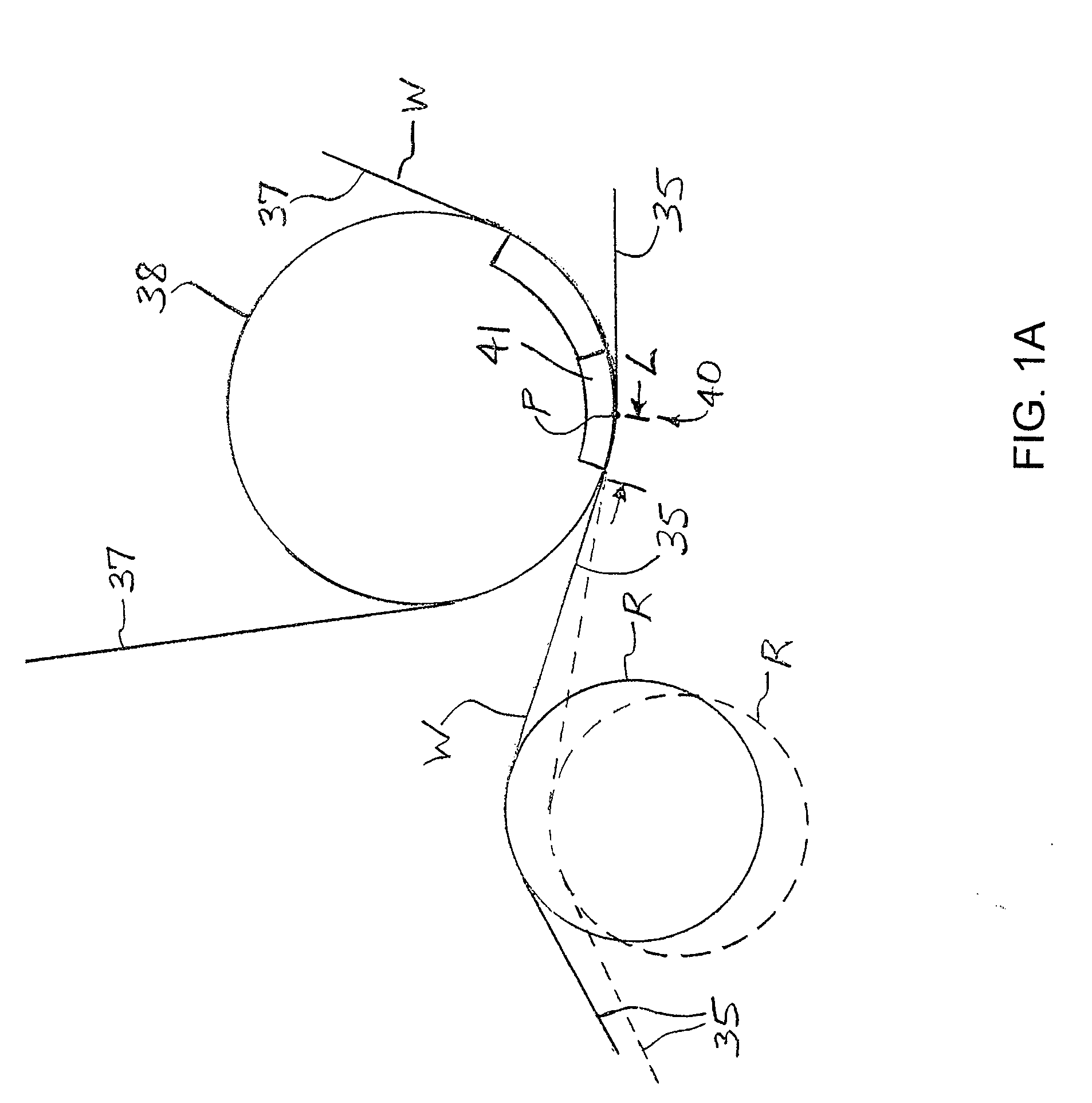Papermaking Machine Employing an Impermeable Transfer Belt, and Associated Methods
a transfer belt and papermaking machine technology, applied in papermaking, press section, non-fibrous pulp addition, etc., can solve the problems of torn webs, ineffective use of such modified belts, and insufficient wet strength for processing light-weight tissue webs at high speed, which is necessary for commercial applications, and achieves a higher sheet caliper
- Summary
- Abstract
- Description
- Claims
- Application Information
AI Technical Summary
Benefits of technology
Problems solved by technology
Method used
Image
Examples
example 3
[0077]The conditions of Example 1 were repeated with a transfer belt similar to an Albany LA particle belt with a roughness of 3 micrometers. The tissue web transferred to the fabric at speeds up to 1200 m / min. Product samples were taken at 600 meters / minute because of limitations with the reel, but the properties of sheets produced at higher speeds are believed to be very similar. The properties of the tissue were as follows:
Basis weight (bone dry)g / m216.9Caliperμm283Bulkcm3 / g16.7Stretch MD%39.8Stretch CD%12.4Tensile MDN / m81Tensile CDN / m41
[0078]This Example illustrates that the use of a particle belt as the transfer belt enables transfer of the web at higher speeds than conventional transfer belts.
example 4
[0079]The process of Example 3 was repeated, except the distance from the press to the vacuum roll was increased from 2.4 meters to 4 meters. The tissue web transferred to the fabric at speeds up to 1400 m / min. The consistency of the paper transferred to the dryer was 48% dry solids content, resulting in 22% less water evaporation compared to a normal wet-press process, and 50-60% less water evaporation than a typical through-air-drying process. This Example illustrates that the maximum speed at which the paper web will transfer is increased with increased residence time on the transfer belt prior to transfer to the texturizing fabric.
example 5
[0080]Example 4 conditions were repeated with an Albany G3 style belt. The tissue web transferred to the fabric at speeds up to 1600 meters / minute. From these trials, it was determined that the Albany LA and G3 type belts are suitable for high-speed manufacture of low basis-weight paper in the type of process described herein. This Example illustrates that altering the surface structure of the particle belt can improve transfer to the texturizing fabric.
PUM
| Property | Measurement | Unit |
|---|---|---|
| Length | aaaaa | aaaaa |
| Length | aaaaa | aaaaa |
| Length | aaaaa | aaaaa |
Abstract
Description
Claims
Application Information
 Login to View More
Login to View More - R&D
- Intellectual Property
- Life Sciences
- Materials
- Tech Scout
- Unparalleled Data Quality
- Higher Quality Content
- 60% Fewer Hallucinations
Browse by: Latest US Patents, China's latest patents, Technical Efficacy Thesaurus, Application Domain, Technology Topic, Popular Technical Reports.
© 2025 PatSnap. All rights reserved.Legal|Privacy policy|Modern Slavery Act Transparency Statement|Sitemap|About US| Contact US: help@patsnap.com



